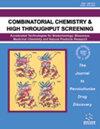Investigation of the Mechanism of Siweixizangmaoru Decoction in Improving CIA-Induced Arthritis in Rats Based on Network Pharmacology and Experimental Verification
IF 1.6
4区 医学
Q4 BIOCHEMICAL RESEARCH METHODS
Combinatorial chemistry & high throughput screening
Pub Date : 2024-09-18
DOI:10.2174/0113862073326896240901110932
引用次数: 0
Abstract
Background: Rheumatoid Arthritis (RA) is a chronic autoimmune disease with a complex etiology. Siweixizangmaoru Decoction (SXD) has been used to treat RA in Tibet for a long history as a classic Tibetan medicine formula. However, the potential pharmacological mechanism has not been elucidated yet. Aims: The aim of this study was to evaluate the efficacy and mechanism of action of SXD in the treatment of RA using network pharmacology and molecular docking analysis. Method: Network pharmacology was employed to identify the potential bioactive components and key targets of SXD for the treatment of RA. Molecular docking of key targets and potential compounds was conducted. High-performance liquid chromatography was performed to validate the predicted active components of SXD. We established a rat model of RA and evaluated the histopathology of each group of rats. In addition, the levels of inflammatory factors in serum and the expression levels of PI3K/AKT and MAPK pathway-related proteins in synovial tissue were detected. Results: The results of network pharmacological analyses indicated that apigenin, rhamnolipids, kaempferol, quercetin, and naringenin are potential bioactive components of SXD for the treatment of rheumatoid arthritis and that their therapeutic effects may be related to the PI3K-Akt and MAPK pathways. The results of in vivo experiments show that SXD improved the arthritis index, significantly reduced joint swelling, and improved synovial inflammation and cartilage destruction. Conclusion: Network pharmacology, along with experimental validation, provided a useful approach for understanding the pharmacological mechanism of Siweixizangmaoru decoction in RA.基于网络药理学和实验验证的四味藏药煎剂改善 CIA 诱导的大鼠关节炎的机制研究
背景:类风湿性关节炎(RA)是一种病因复杂的慢性自身免疫性疾病:类风湿关节炎(RA)是一种病因复杂的慢性自身免疫性疾病。在西藏,四味藏药煎剂(SXD)作为经典藏药配方用于治疗类风湿关节炎已有悠久的历史。然而,其潜在的药理机制尚未阐明。目的:本研究旨在利用网络药理学和分子对接分析评估SXD治疗RA的疗效和作用机制。研究方法:采用网络药理学方法确定 SXD 的作用机制:采用网络药理学方法确定SXD治疗RA的潜在生物活性成分和关键靶点。对关键靶点和潜在化合物进行分子对接。采用高效液相色谱法验证预测的 SXD 活性成分。我们建立了一个 RA 大鼠模型,并对每组大鼠的组织病理学进行了评估。此外,还检测了血清中炎症因子的水平以及滑膜组织中 PI3K/AKT 和 MAPK 通路相关蛋白的表达水平。结果网络药理学分析结果表明,芹菜素、鼠李糖脂、山柰醇、槲皮素和柚皮素是 SXD 中潜在的生物活性成分,可用于治疗类风湿性关节炎,其治疗效果可能与 PI3K-Akt 和 MAPK 通路有关。体内实验结果表明,SXD 可改善关节炎指数,显著减轻关节肿胀,改善滑膜炎症和软骨破坏。结论网络药理学以及实验验证为了解四味藏药煎剂治疗 RA 的药理机制提供了一种有用的方法。
本文章由计算机程序翻译,如有差异,请以英文原文为准。
求助全文
约1分钟内获得全文
求助全文
来源期刊
CiteScore
3.10
自引率
5.60%
发文量
327
审稿时长
7.5 months
期刊介绍:
Combinatorial Chemistry & High Throughput Screening (CCHTS) publishes full length original research articles and reviews/mini-reviews dealing with various topics related to chemical biology (High Throughput Screening, Combinatorial Chemistry, Chemoinformatics, Laboratory Automation and Compound management) in advancing drug discovery research. Original research articles and reviews in the following areas are of special interest to the readers of this journal:
Target identification and validation
Assay design, development, miniaturization and comparison
High throughput/high content/in silico screening and associated technologies
Label-free detection technologies and applications
Stem cell technologies
Biomarkers
ADMET/PK/PD methodologies and screening
Probe discovery and development, hit to lead optimization
Combinatorial chemistry (e.g. small molecules, peptide, nucleic acid or phage display libraries)
Chemical library design and chemical diversity
Chemo/bio-informatics, data mining
Compound management
Pharmacognosy
Natural Products Research (Chemistry, Biology and Pharmacology of Natural Products)
Natural Product Analytical Studies
Bipharmaceutical studies of Natural products
Drug repurposing
Data management and statistical analysis
Laboratory automation, robotics, microfluidics, signal detection technologies
Current & Future Institutional Research Profile
Technology transfer, legal and licensing issues
Patents.

 求助内容:
求助内容: 应助结果提醒方式:
应助结果提醒方式:


